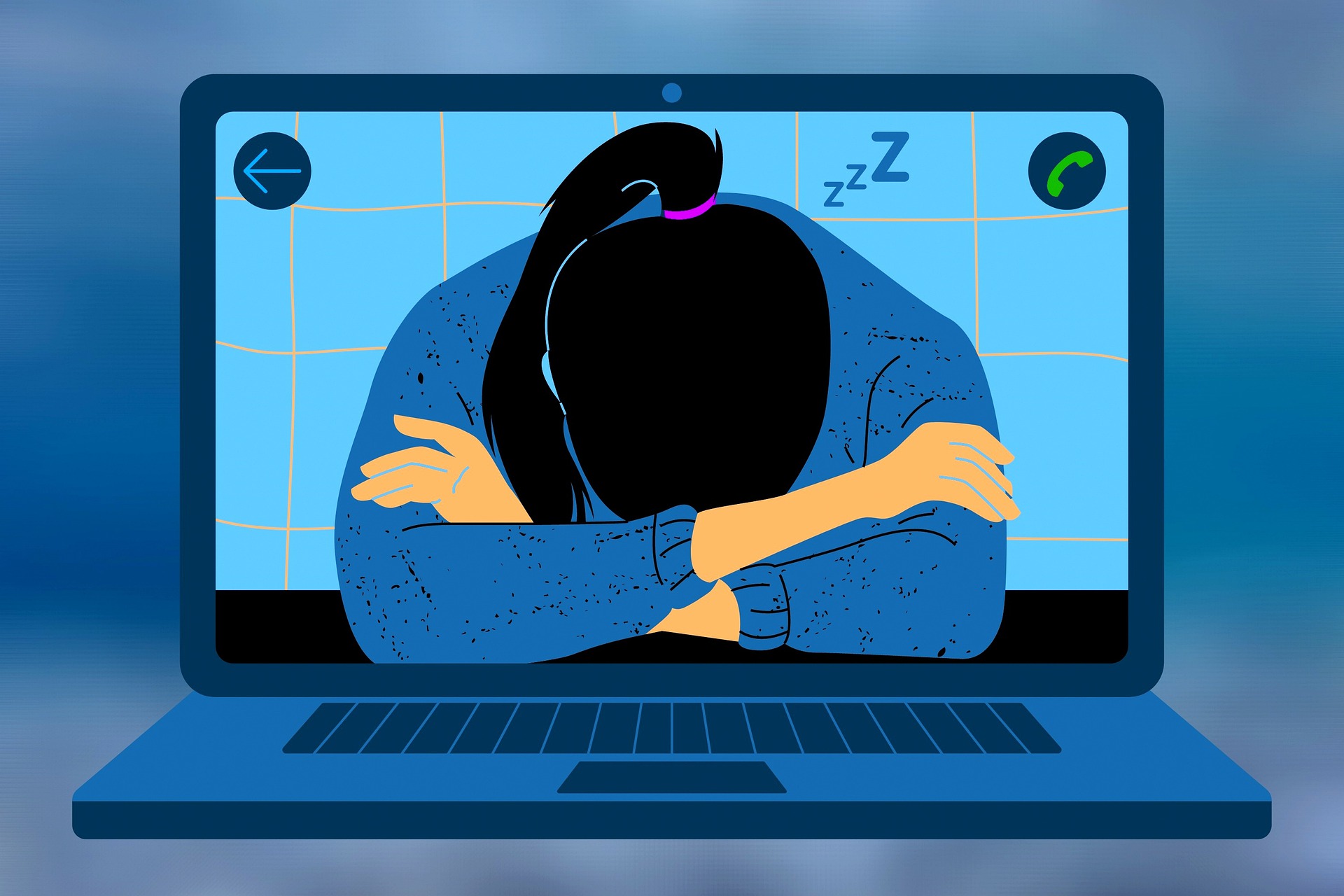By: Katherine E. Lee, 2022 PharmD and MPH Candidate
During the rapid transition to virtual education, one of the most challenging adjustments was recognizing and finding ways to combat “zoom fatigue” – the phenomenon of exhaustion resulting from excessive communications through a virtual platform. Students and professionals alike have experienced fatigue and psychological manifestations that affect levels of stress, productivity, and the feeling of burnout. Several identified causes for zoom fatigue stem from the virtual nature of the communication, such as abnormally long periods of direct–eye contact, lack of nonverbal cues, and audio delays.
The common element of Zoom fatigue and classroom fatigue
Interestingly, another identified risk factor fueling increased levels of zoom fatigue is not exclusive to the virtual environment. Jeremy Bailenson, a Stanford professor studying the psychology of virtual and augmented reality, highlighted decreased mobility as a key contributor to zoom fatigue.1 While we are just learning about the effects of prolonged sedentary periods on engagement in virtual classrooms, this continues to be a problem for students in traditional face-to-face classroom environments. Pharmacy students often sit through 20 or more hours of didactic lectures per week, with each session lasting from 50 to 90 minutes. Most of the time, movement is permitted during brief breaks between classes to change rooms or use the restroom. However, many students feel the need to use this time to prepare for the upcoming class (i.e., pulling up PowerPoint slides or reviewing for a quiz). Recognizing the common sedentary style of classrooms in higher education, regardless of physical location (zoom or in-person) is the first step of applying lessons learned about cognition and physical movement into traditional, non-virtual classrooms as well.
The link between physical activity and cognition
Movement is important for more than just alleviating fatigue. The link between physical activity and cognition has deep roots in the history of education. Aristotle, acknowledged as the founder of western logic, seemed to recognize this concept as early as 300 BC. He founded the peripatetic (Greek for “given to walking”) school that focused on advancing scientific thought and reasoning through walking discussions around the grounds. This learning style may seem unfamiliar to modern students, but Aristotle and other early western philosophers were pioneers regarding expanding logic and cognition through physical movement. The effects of physical activity outside the classroom have been studied extensively and shown to increase academic performance and overall well-being.2,3 When studied in adolescents, implementing physical activity into classroom learning was associated with improvements in short-term retention, attention span, motivation, and overall academic performance.4 The CDC has even released extensive data and recommendations on implementing physical activity into primary school classrooms. The data evaluating the impact in higher education is limited but has shown sedentary classroom environments associated with increased feelings of prolonged discomfort and sleepiness among college–aged students.5
Simple ways to alleviate the passive aspects of education
The current emphasis on combating zoom fatigue provides a unique opportunity for educators to recognize and address the burden of prolonged periods of inactivity in the classroom. Bailenson and other researchers involved in the study of virtual fatigue suggest ways to implement more physical activity into long zoom days, such as walking outside during breaks between meetings, doing quick stretches, transitioning to standing, and frequently moving locations. Including small changes into individual courses would likely require minimal effort from faculty with the potential to substantially increase cognition for students while decreasing the feelings of unrest and fatigue.
Examples of how instructors can promote physical activity:
- Designate classroom space where students can opt to stand for part of the lecture
- Encourage students to stand or take a walk while participating in group discussions
- Allot 2 – 5 minutes of activity time to break up continuous lecturing. Encourage students to walk around the classroom, move locations, or share a short video guiding students through movements while standing or sitting.
- Implement activities that encourage students to move around the classroom
Final considerations
Despite clear evidence demonstrating the benefits of incorporating movement into the classroom, there are still challenges to consider in its implementation. Typical didactic lectures are already short on time, and instructors may struggle to include short activities due to the time constraint. It is essential to evaluate the benefit of adding physical activity versus the few minutes it may deduct from instruction time. As with any instructional design, successful incorporation requires plenty of trial and error and constructive feedback. Given this, it is important to encourage open discussions and idea-sharing in order to promote the successful incorporation of these activities in the pharmacy classroom.
In what ways have you successfully implemented (or seen implemented) movement into the pharmacy classroom? How can we optimize time spent during didactic lectures to promote physical activity while covering all of the necessary topics?
Acknowledgments
I would like to thank Dr. Jeff Cain for his encouragement, guidance, and patience as I developed this article.
References
- Bailenson, J. N. (2021). Nonverbal Overload: A Theoretical Argument for the Causes of Zoom Fatigue. Technology, Mind, and Behavior, 2(1).
- Ratey JJ, Loehr JE. The positive impact of physical activity on cognition during adulthood: a review of underlying mechanisms, evidence, and recommendations. Rev Neurosci. 2011;22(2):171-185.
- Mualem R, Leisman G, Zbedat Y, et al. The Effect of Movement on Cognitive Performance. Front Public Health . 2018;6:100.
- Norris E, van Steen T, Direito A, Stamatakis E. Physically active lessons in schools and their impact on physical activity, educational, health and cognition outcomes: a systematic review and meta-analysis. Br J Sports Med. 2020;54(14):826-838.
- Hosteng KR, Reichter AP, Simmering JE, Carr LJ. Uninterrupted Classroom Sitting is Associated with Increased Discomfort and Sleepiness Among College Students. Int J Environ Res Public Health. 2019;16(14):2498.
Author Bio(s):

Katherine Lee is a 2022 PharmD and MPH candidate at the University Kentucky College of Pharmacy and College of Public Health. Educational scholarship interests include mindfulness in professional studies, health equity, and critical thinking strategies. She enjoys baking, running an Etsy shop, listening to audiobooks or true crime podcasts, and eating cheese pizza in her free time.
Pulses is a scholarly blog supported by a team of pharmacy education scholars.
